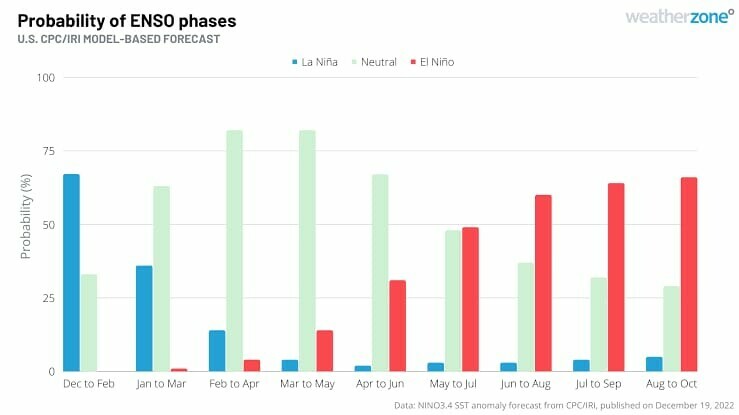What is monsoon 2023 going to be like?
Last year, Pakistan experienced devastating floods during the monsoon, leading to a high death toll and displacements. Pakistanis are understandably nervous about what to expect this year.
According to the Met Office, the monsoon is expected to arrive in July in most parts of Pakistan and last till September.
During the monsoon season, prevailing El Niño conditions and a positive phase in the Indian Ocean Dipole (the difference in sea surface temperature between two areas) are anticipated. Subsequently, below-average rainfall is expected during this period for Sindh, Balochistan and southern Punjab. However, upper Punjab and Khyber Pakhtunkhwa will experience high rainfall.

Sardar Sarfraz, the director of the Meteorological Department, said that the country saw a staggering 176% above-average rainfall last year, reaching 450% in Balochistan and 425% in Sindh.

This year’s outlook is distinct as certain regions of Sindh, Balochistan, and Punjab are anticipated to receive below-average rainfall, he said. On the other hand, Khyber Pakhtunkhwa and Gilgit Baltistan may experience rainfall around 10% above normal, but it would not be considered alarming.
Sardar Sarfraz said that a higher chance of rain occurs when the Pacific Ocean’s temperature is lower than normal, resulting in the formation of La Niña. Conversely, when the ocean temperature is higher than normal, El Niño develops, reducing rainfall.
Explaining the transition from La Niña to El Niño, the weather expert, Owais Haider from Pak Weather noted, “In El Niño, western disturbances, such as western wind streams, occur more frequently, leading to heavy hailstorms in various parts of our country. This indicates our movement from La Niña to a neutral phase and then towards El Niño. As El Niño progresses, the intensity of westerly winds increases.”

Haider said there has been an unusual presence of westerly winds in different parts of the country during June, which are typically otherwise observed in winter. As a result, areas like Saiful Muluk Lake and Babusar Top continue to experience snowfall. Normally, these regions would have already melted snow by March, April, or May.
He said this year’s monsoon is expected to be near normal throughout the country, with above-normal rainfall predicted for the upper regions. The primary reason for this forecast is the influence of last year’s weather pattern, which supported La Niña.
The upcoming monsoon season is anticipated to commence in the second week of July and extend until September 15 – Expert
This year’s monsoon will likely bring less rain compared to the previous year, it does not imply a complete absence of rainfall or a severe drought situation, he added.
“The upcoming monsoon season is anticipated to commence in the second week of July and extend until September 15,” stated Haider. He mentioned that Karachi is expected to receive rainfall ranging from 172mm to 200mm, while the annual monsoon average for the city stands at 170mm.
Regarding future climate trends, Haider warned that upcoming years could bring significant warmth due to El Niño, with the potential for 2024 to become the warmest year globally, attributing this trend to El Niño conditions and climate change.
This story was originally published on June 7.
For the latest news, follow us on Twitter @Aaj_Urdu. We are also on Facebook, Instagram and YouTube.














Comments are closed on this story.